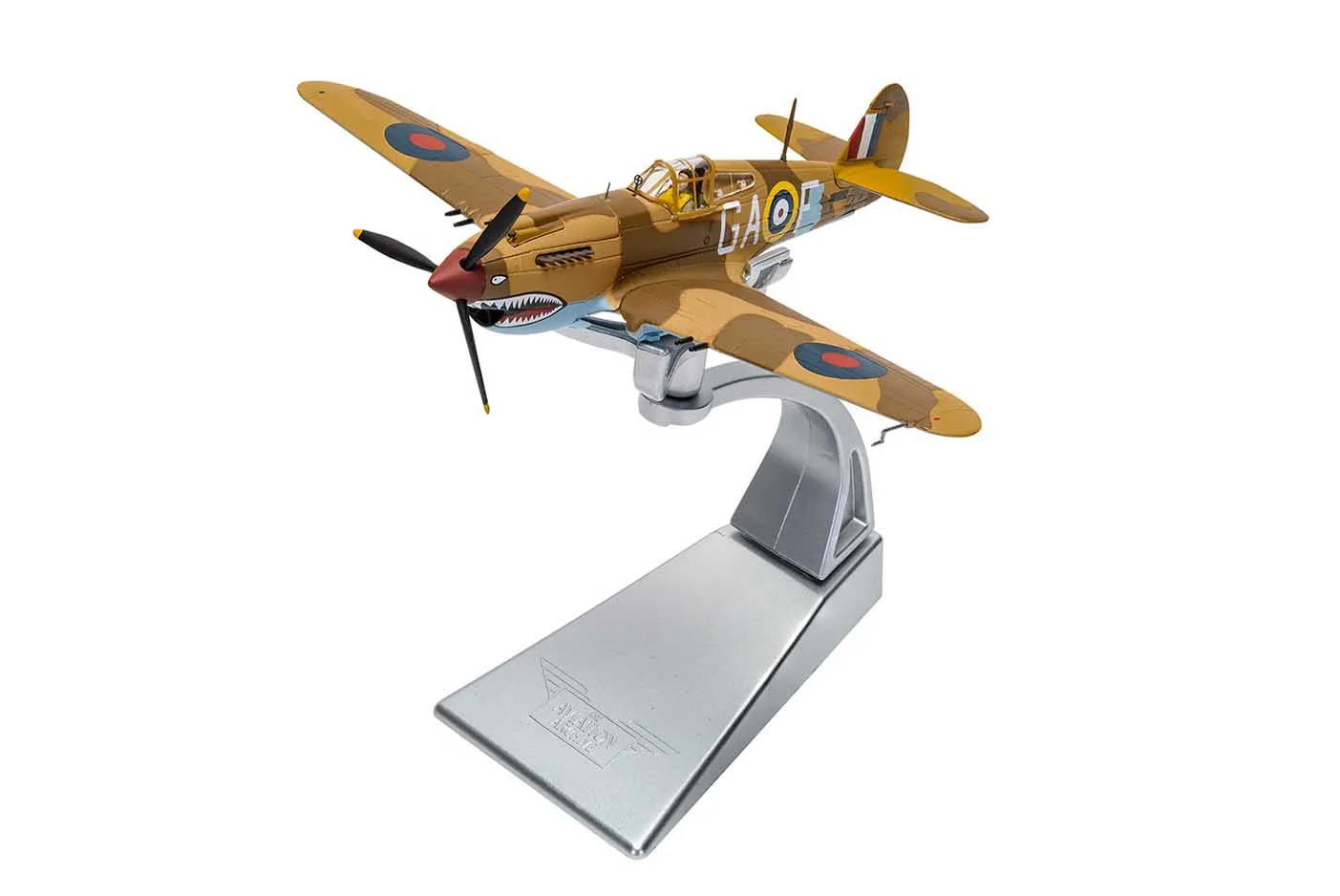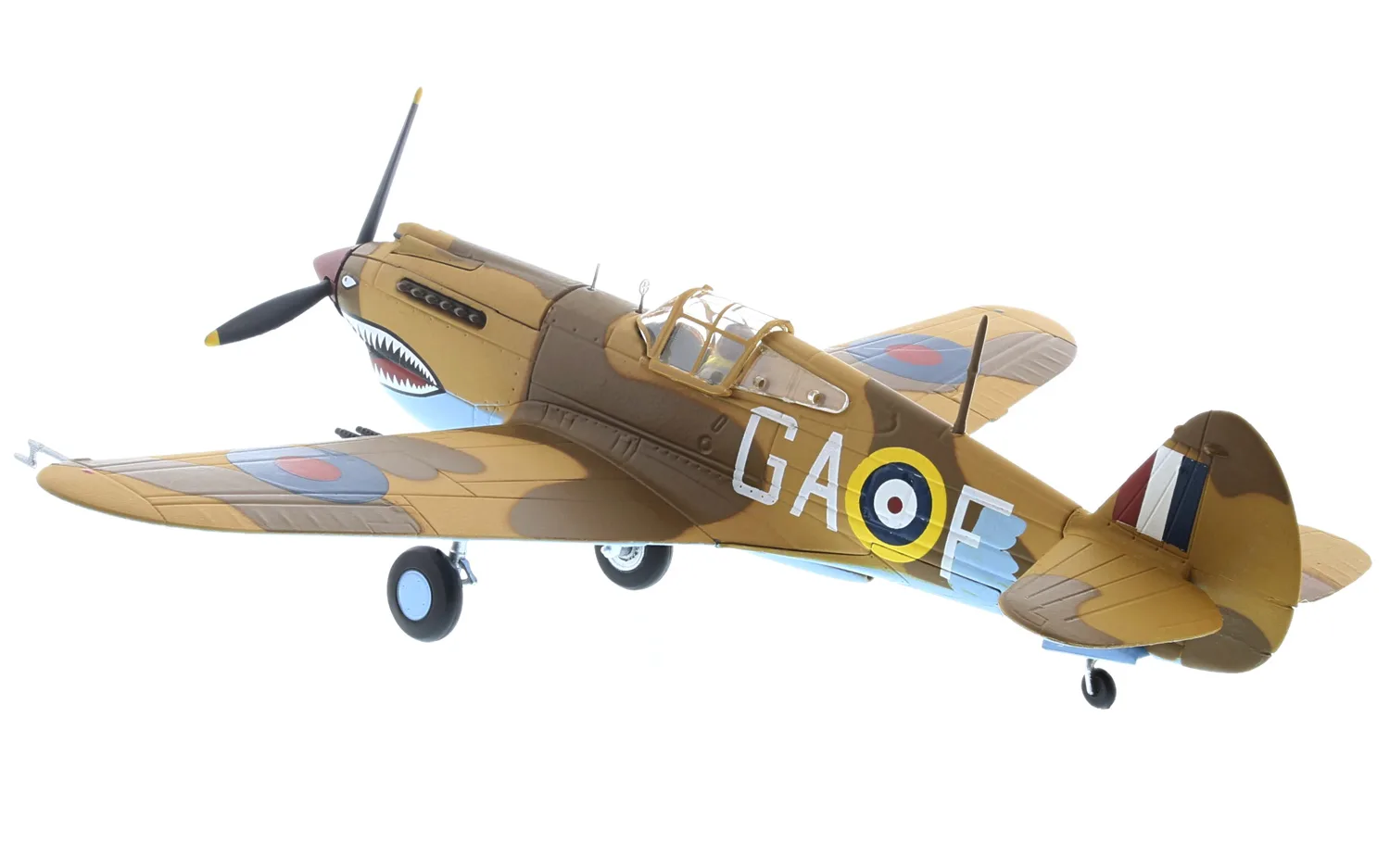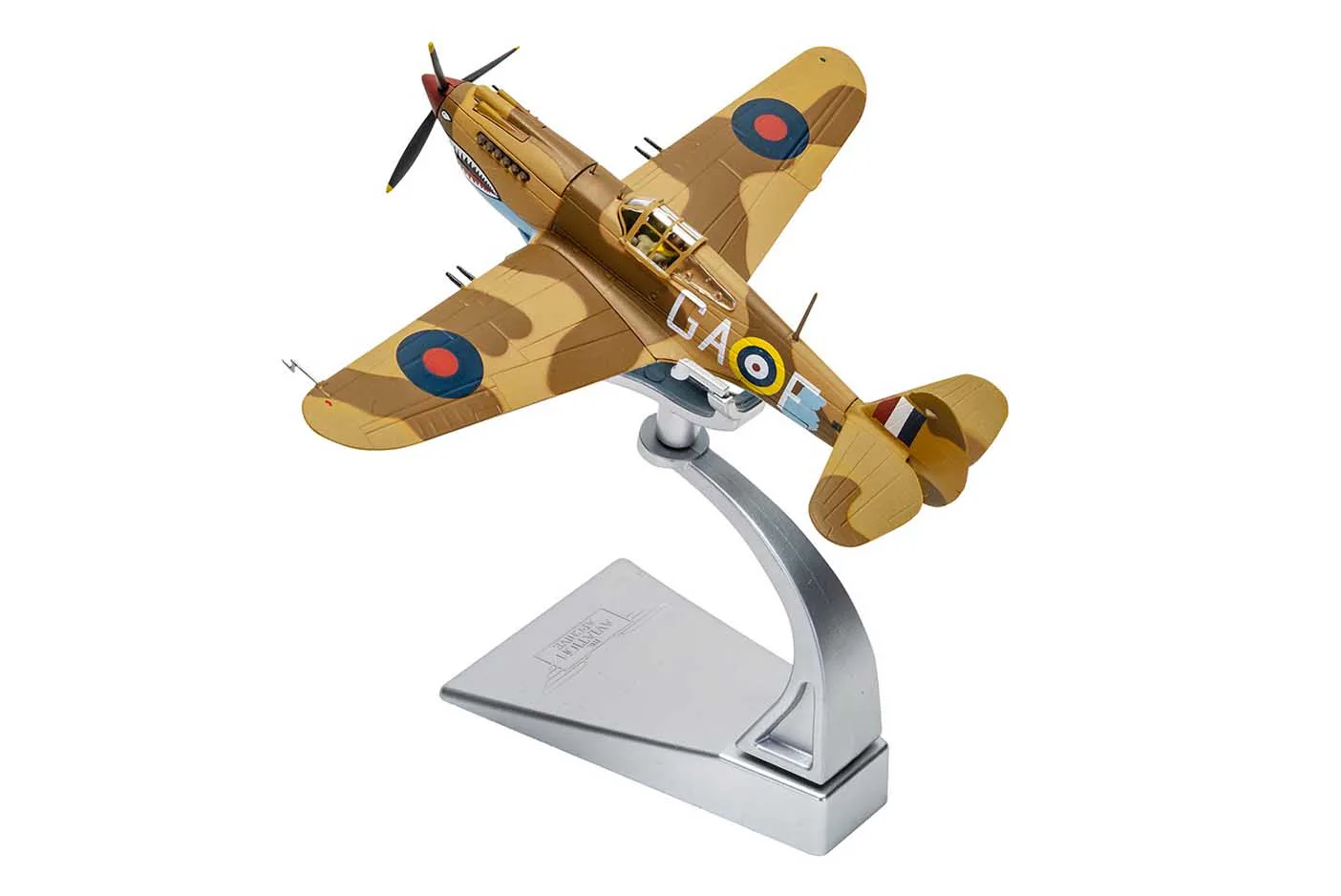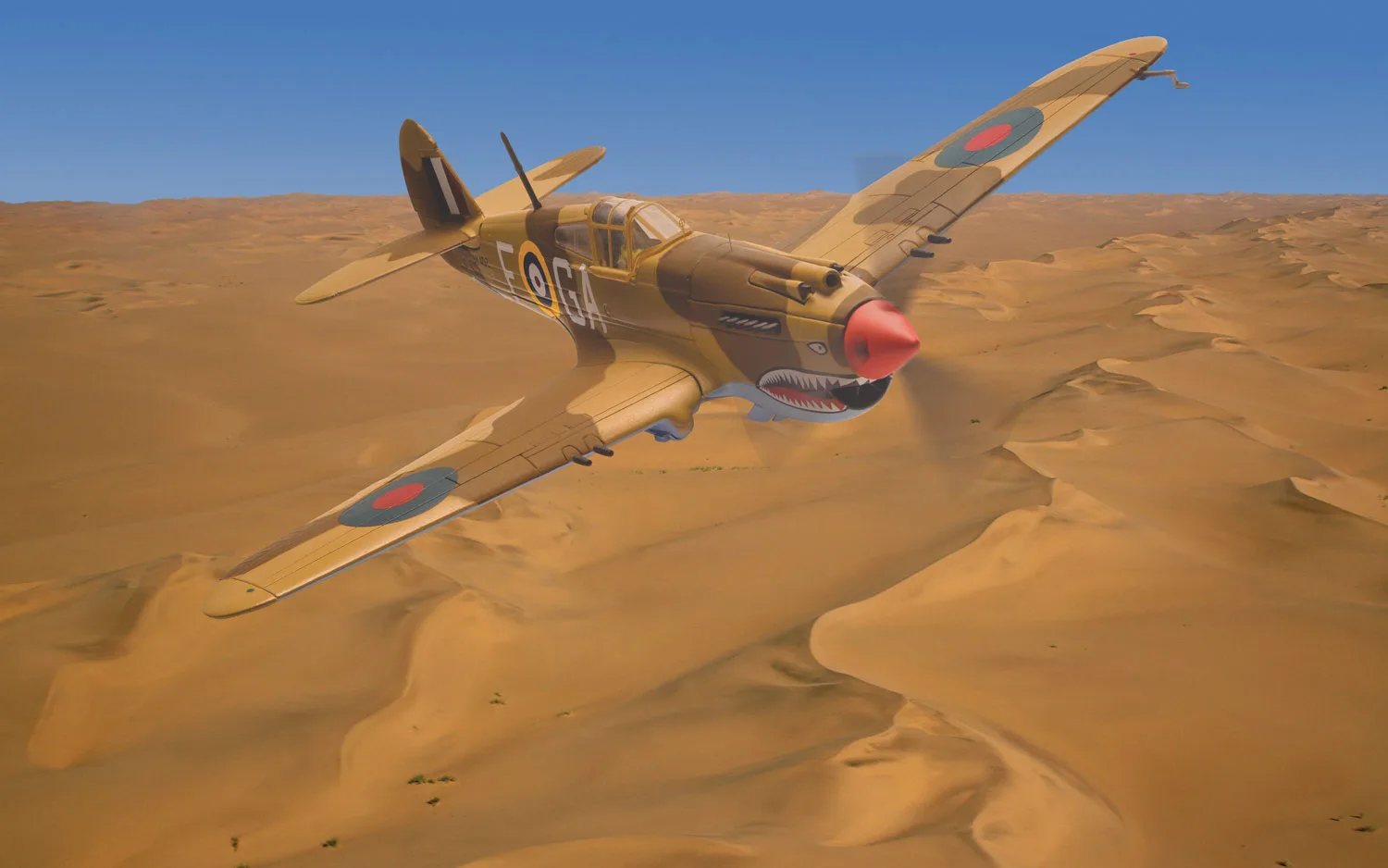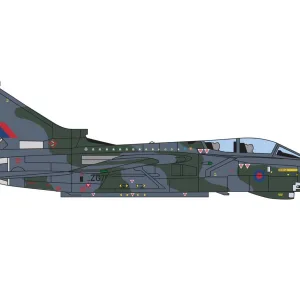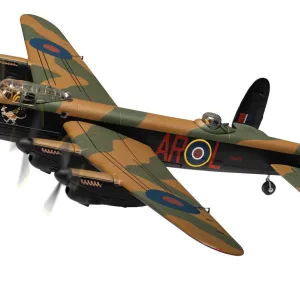Curtiss Tomahawk IIA AK402 PO Neville Duke 112 Squadron
The Curtiss P-40 series of fighters may not be regarded amongst the most successful of WWII, but as Europe fell to the advancing Wehrmacht and Britain and her Commonwealth fought to stem the German tide, it is difficult to think of a more important aircraft on both sides of the Atlantic. A capable and well-built fighter, the Curtiss P-40 was easy to maintain and operate and relatively cheap to produce. Crucially, it was in full scale production by the time WWII began.
Despite the fact that the Curtiss P-40 was one of the most advanced American fighters in service at the outbreak of WWII, it would be the Royal Air Force that gave the aircraft its combat introduction. Early RAF Tomahawks (the British name for the P-40B) were not deemed suitable for fighter operations against the Luftwaffe and were initially used in Army cooperation and reconnaissance roles, operating from bases in the UK. The RAF made a number of suggestions to Curtiss following their experiences with these early machines and a number of improvements were incorporated into the next aircraft deliveries. This resulted in the Desert Air Force receiving Tomahawks in 1941 as replacements for their Hurricanes and being hurled into battle against Axis air forces.
It was also in the desert that the RAF Tomahawks became some of the most famous aircraft of the entire war, as No.112 Squadron pilots painted sinister looking sharks teeth and eyes behind the propellers of their P-40s, giving the aircraft an extremely aggressive appearance. The profile of these early RAF Tomahawks really does resemble that of a shark, a fact that was fully exploited by the pilots of the Desert Air Force. Impressed by magazine pictures of these RAF flying sharks, the famous American Volunteer Group ‘Flying Tigers soon added sharks teeth designs to their own P-40s as they battled Japanese aircraft in the skies above China.
This particular Curtiss Tomahawk was the mount of famous RAF pilot Neville Duke, who was posted to No.112 Squadron in North Africa following a successful spell as Wing Commander ‘Sailor Malan’s’ wingman at Biggin Hill. Used to flying the Spitfire Mk.V, Duke initially found the Tomahawk to be something of a disappointment in combat and was shot down twice during his first few weeks in the desert. Flying Tomahawk IIB AK402, he was shot down on 30th November 1941 by high scoring JG27 ace Otto Schulz, but managed to crash land his aircraft and return to his Squadron. He soon got to grips with the desert air war and started to score victories of his own by the end of the war, Duke became the highest scoring Allied ace in the Mediterranean Theatre with 27 victories to his name. We also went on to become a celebrated test pilot and holder of the world air speed record.

